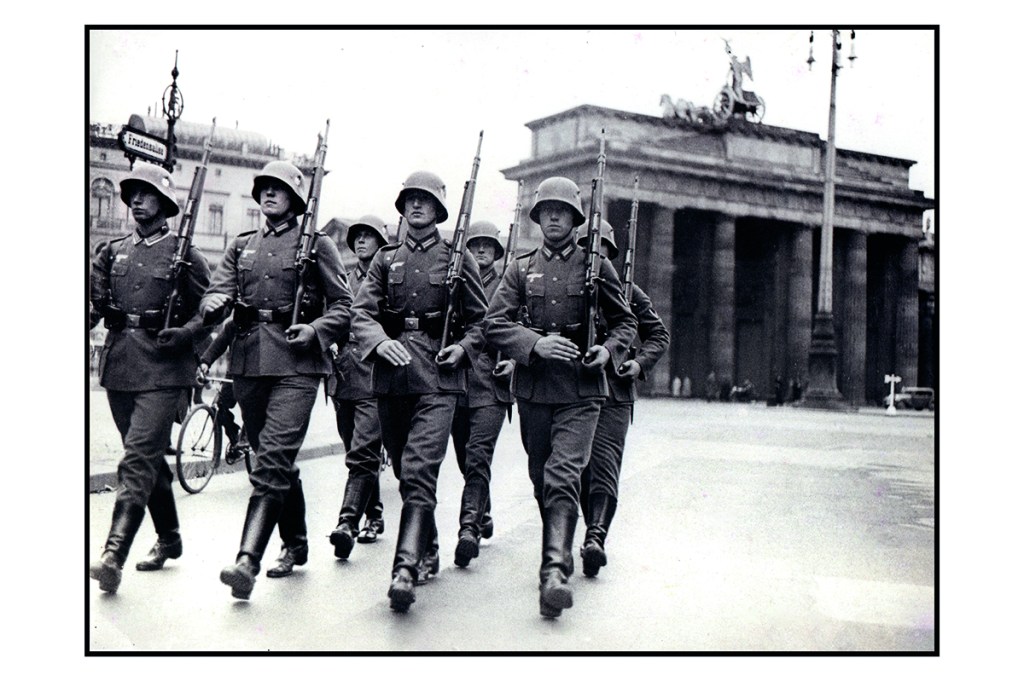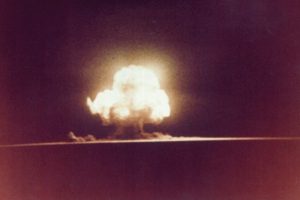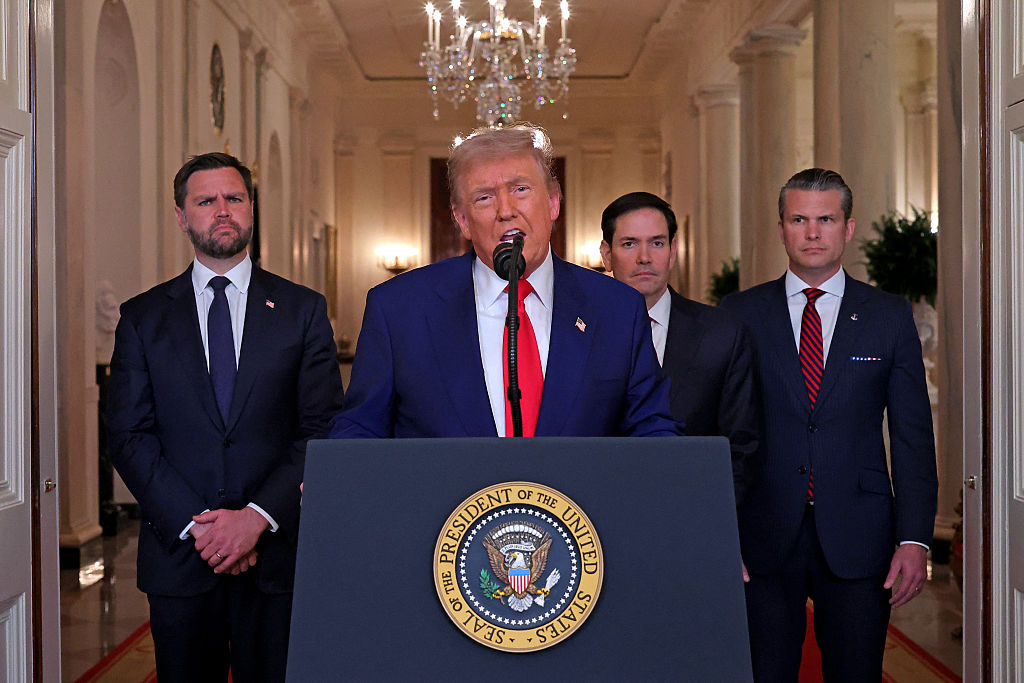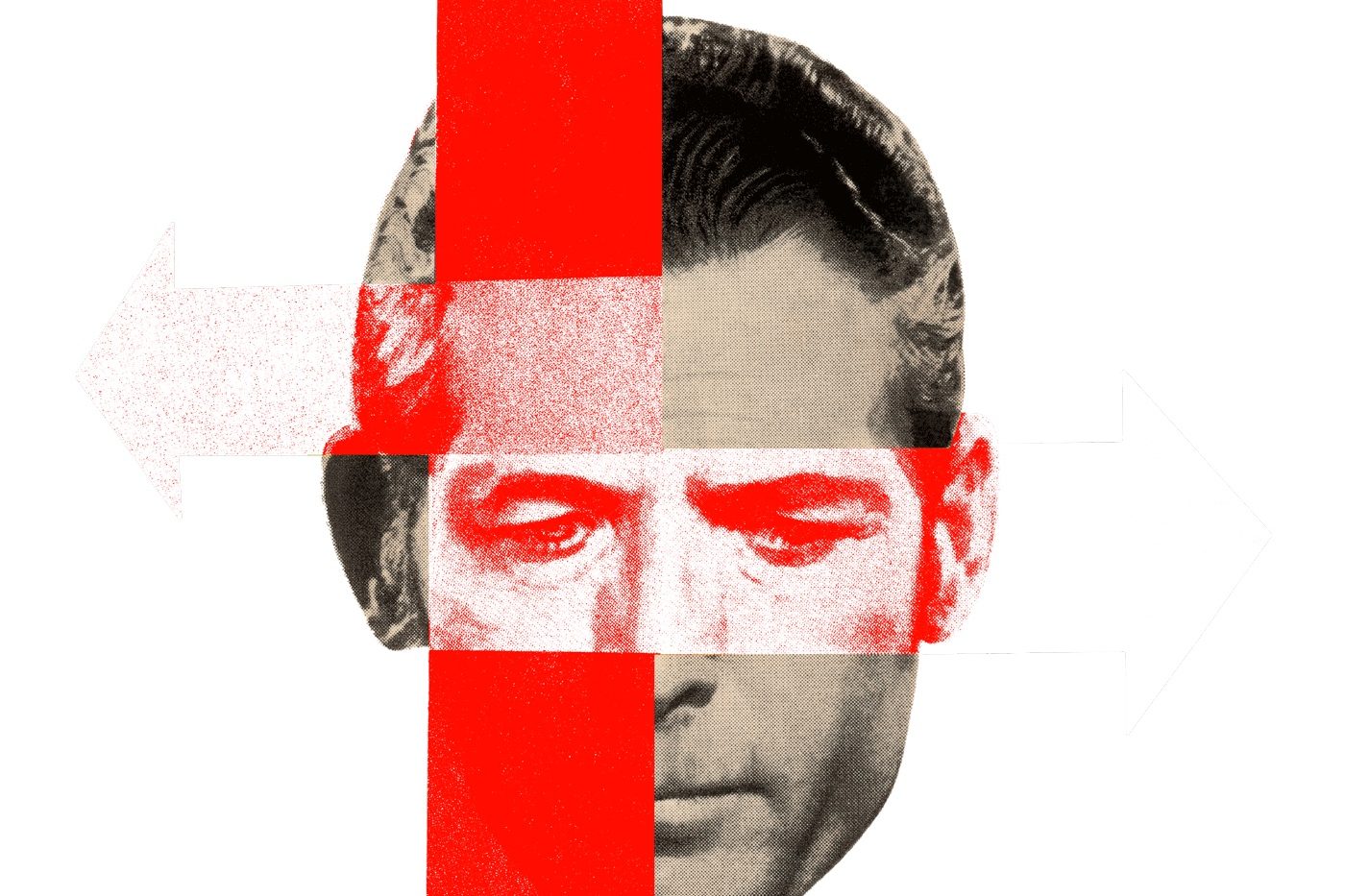“Berlin has too much [history].” Sinclair McKay cites this rueful observation in the preface to his new book about the city. Given that he is not simply discussing Berlin between the wars, or during the second of those wars, or in the Cold War that followed, but all of it, this may come off as a cry for help. History may — in those words attributed to, well, take your pick — be “one damned thing after another,” but when it came to Berlin, those things hurtled through time in a horde, colliding, overlapping and refusing to form an orderly line. And, in Berlin’s case, they had a way of mattering. Not for nothing does this book’s subtitle refer to Berlin as “the city at the center of the world.” Bad news for a writer aiming, presumably, at a degree of concision.
McKay’s solution is to diverge from a standard chronological history of Berlin. Instead, by focusing on this, and summing up that, he adopts a more impressionistic approach, in which heaping detail upon detail plays no small part. The result is far from comprehensive and might have risked ending up as something of a mess (a danger increased by sporadically clumsy prose: “reeling trauma,” “new iteration of duality,” “molten aesthetic energy”), but turns out to be a skillfully assembled collage, out of which a greater narrative emerges.
The details themselves, frequently stories in miniature, are well-chosen, usually intriguing and sometimes just unexpected. They include a band — Charlie and his Orchestra — that played swing (a type of music considered “degenerate” in the Third Reich) but “with a Nazi varnish”; Hitler Youth participating in “Shakespeare Weeks”; Nazi environmentalism (“ask the trees, they will teach you how to become a National Socialist”); the tea with rum (“or rum with tea — we were pretty sloshed”) given to the teams building the Berlin Wall; and the erection just after the First World War of what was in name — Großes Schauspielhaus — and in fact a grand theater built in the expressionist style (“hanging down from the interior dome were… long, bulbous stalactites in serried ranks, which seemed to drip down the sturdy support pillars”), designed to match the “ungovernability” of what would be performed on stage.
After the Nazis took power, the theater was remodeled, and the stalactites were, McKay states, removed (other accounts suggest that many were merely concealed behind a lowered ceiling) “to create a more orderly space for the Nazi mind.”
Another example of how McKay’s observations color a broader canvas can be seen in a longer discussion of Berlin’s development into a city of light in the 1920s. This was thanks to a rich flowering of illumination, made more extravagant still by neon, a relative novelty, “explored,” McKay records, “with particular zeal” in Berlin. The French artist Fernand Léger marveled how he had “now been in Berlin for eight days and [had] not noticed the night at all… Berlin is a single block of light,” while Vladimir Nabokov recalled that “the town was like a fairground… The house-fronts were bathed in garish light to shame the stars.”
Later, light was put to work in the interest of darkness. Influenced, consciously or otherwise, by spectacular displays at Berlin film premieres in the 1920s, Albert Speer realized the city’s new anti-aircraft searchlights could be redeployed to fashion immense columns of light to frame and, I suspect, sacralize party rallies. (Speer’s use of the term “cathedrals of light” may have revealed more than he intended.) A decade or so on, the prelude to Berlin’s fall was, McKay writes, the Red Army’s attack on the Seelow Heights, some fifty miles east of the city. After the initial assault and a massive bombardment, the Soviets used 143 searchlights (capable of beaming the equivalent of “over one hundred billion candle[s]” according to Marshal Zhukov, the eventual conqueror of Berlin) in an effort to illuminate and intimidate the Heights’ defenders.
As it happened, cloud and dust meant that, on this occasion, the weaponization of light failed, but it made no difference. Berlin was doomed, as were Hitler’s plans to replace the core of the old, unruly, grubby city, a palimpsest of inconvenient pasts, with Germania, a city of wide avenues and strikingly soulless neoclassicism. It was to be dominated by the “extraordinary bulk” of the People’s Hall, the crowning monument of a new era in which the people would count for very little. (East) Berlin would instead have to make do with the Stalinallee, which McKay calls “the centerpiece of communist reconstruction” — a reasonable enough verdict, if mass repression is excluded — a “grand boulevard,” lined by “buildings in the Soviet classical style.”
To keep this project on schedule, labor targets were hiked, leading workers to throw down their tools and triggering the first distinct post-war rising — (earlier insurgencies in Ukraine, Poland and the Baltic States all began in the war’s closing stages) against Soviet rule in Eastern Europe. It was crushed. It’s not much of a consolation that Stalinallee was rebranded as Karl-Marx-Allee during the Khrushchev years. Disgracefully, it still bears that name. Germany can take a while to come to a full reckoning with its former dictatorships.
Even if he scorns the bondage of a conventional timeline, McKay has to start his book somewhere, and so he begins with a portrayal of a devastated Berlin just weeks away from being overrun by the Red Army. The ranks of the city’s defenders, padded out by schoolboys and those well above normal military age, are ill-equipped and hugely outnumbered by the force that is about to tear through them.
Before he turns his attention to their fate, McKay looks backwards, to Weimar, to Hitler’s ascendancy, to the relentless ratcheting up of the persecution of Berlin’s Jews, to war and the Holocaust, providing a backstory to explain how the former city of light had descended into this terrible dusk. With that behind him, he then relates the horrors accompanying the Nazi capital’s final disintegration in a vivid depiction bolstered, as in so much of this book, by well-selected quotes and commentary from contemporary sources.
It was a time when the surreal and the grotesque became commonplace, an apocalypse well-suited to McKay’s sharp eye: Charlie and his Orchestra playing almost to the end, a group of friends taking shelter on a yacht, people carrying or wearing glass capsules of potassium cyanide (just in case), and bodies dangling from lampposts, strung up by a frenzied SS for desertion, a reluctance to fight or maybe just an ill-judged remark.
But it was a finale that was also an interlude. McKay records not only the end of the Reich, but of the growing competition between the Allies (Western on one side, the Soviets on the other) to control what remained of Germany. The contest was at its sharpest in Berlin, a city that Stalin had hoped would eventually be his to keep. This conflict may, in its earliest days, have been fought by the Soviets and their German accomplices with more subtlety, particularly on the cultural front, than might be assumed. Yet it also included the kidnapping and killing of political opponents, generally on the left, including those who had mistakenly thought that they were safe in the city’s Western sectors.
This part of the book — no more comprehensive than what precedes it — is not a complete chronicle of post-war Berlin, or, more accurately, Berlins, even if the blockade, the airlift, JFK’s visit and, of course, the fall of the Wall all make their appearances. Nevertheless, here too, those revealing details — those small stories — make this much more than a bare-bones account, although, uncharacteristically, McKay cuts one of those stories far too soon.
It concerns Erich Nehlhans, one of those few Berlin Jews who had survived war and genocide by going deep underground. Afterwards, Nehlhans took a prominent role in the struggles to revive the city’s Jewish community and to help survivors of the camps. But what McKay doesn’t say is that, in 1948 — a period of mounting Stalinist antisemitism — Nehlhans was convicted of “anti-Soviet agitation” and aiding Jewish Red Army deserters to resettle in the United States and Palestine. And so, this remarkable man who had avoided Hitler’s camps found himself imprisoned by his liberators in Sachsenhausen, a former concentration camp, which, as McKay notes elsewhere, the Soviets had reopened for their own purposes.
He didn’t stay there long, however. Nehlhans died two years later in the Gulag. He had outlasted one Berlin only to be consumed by its successor. The fall of the Wall, the “final Berlin revolution of the twentieth century,” writes McKay, “was the truly definitive one.” But it is hard to read this book without wondering, somewhat apprehensively, about what will come next.
This article was originally published in The Spectator’s August 2022 World edition.

























